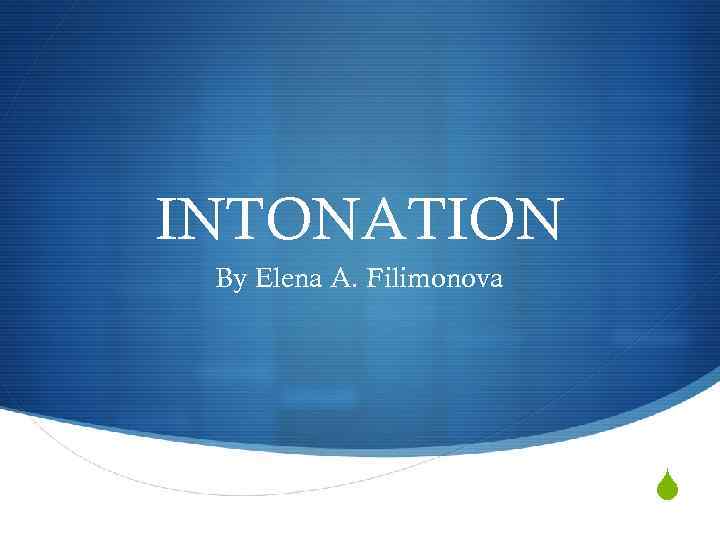
INTONATION By Elena A. Filimonova S
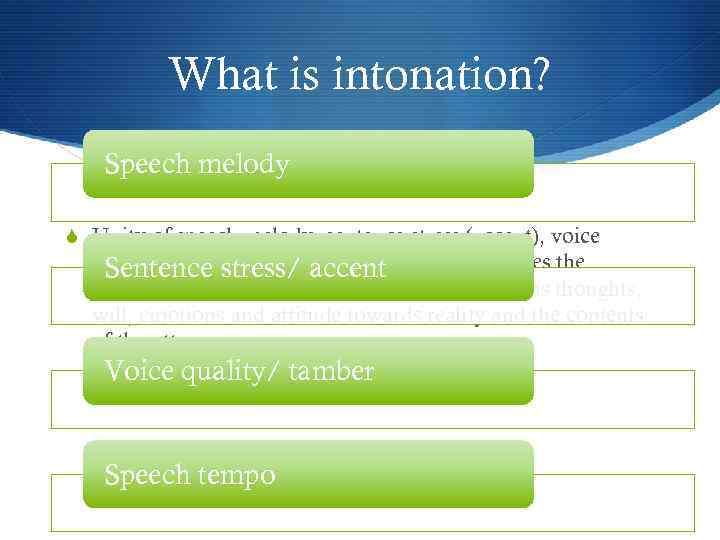
What is intonation? Speech melody S Unity of speech melody, sentence stress (accent), voice quality (tamber) and speech tempo which enables the Sentence stress/ accent speaker to adequately communicate in speech his thoughts, will, emotions and attitude towards reality and the contents of the utterance. Voice quality/ tamber Speech tempo
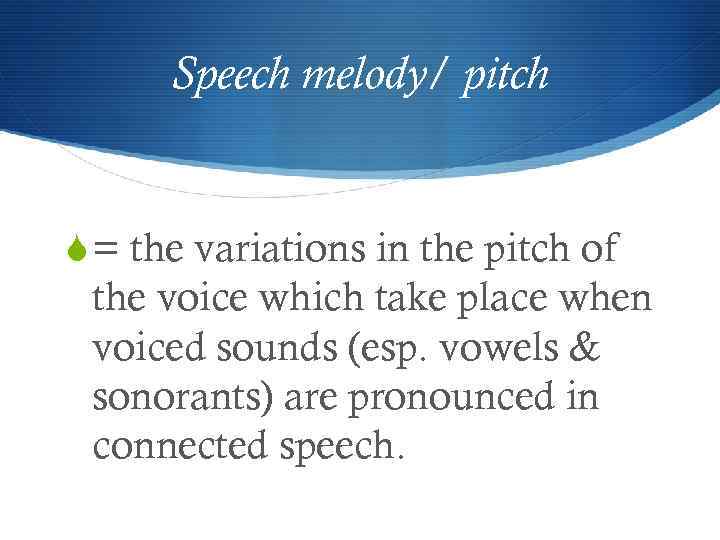
Speech melody/ pitch S = the variations in the pitch of the voice which take place when voiced sounds (esp. vowels & sonorants) are pronounced in connected speech.
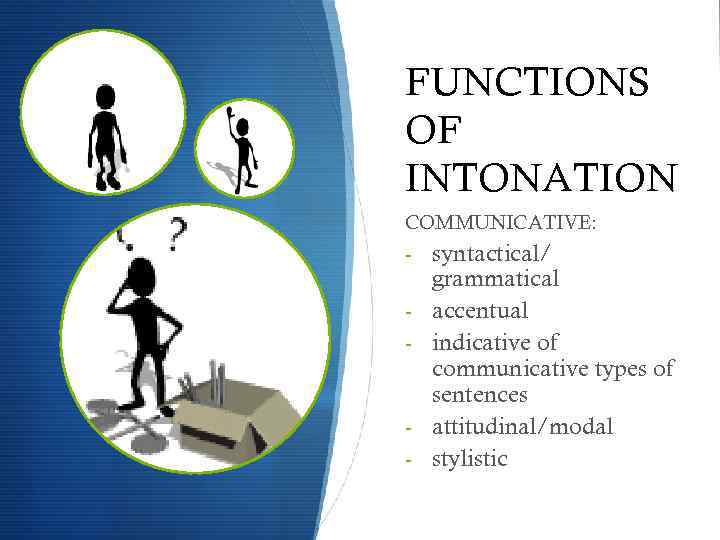
FUNCTIONS OF INTONATION COMMUNICATIVE: - syntactical/ - - grammatical accentual indicative of communicative types of sentences attitudinal/modal stylistic
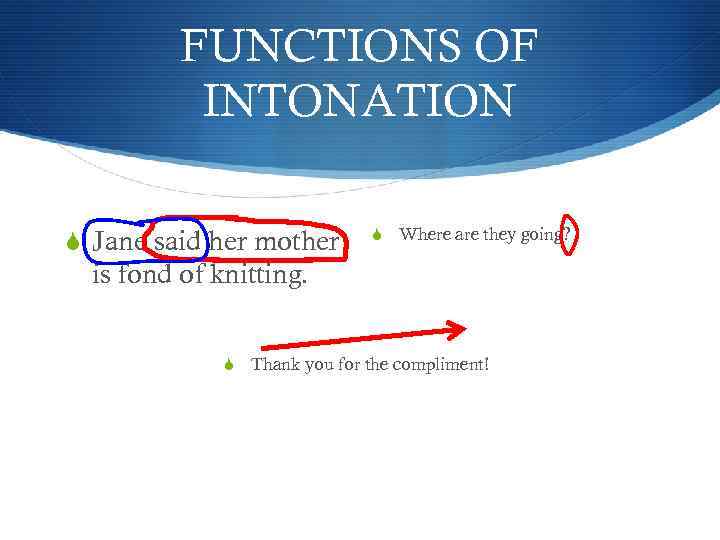
FUNCTIONS OF INTONATION S Jane said her mother S Where are they going? is fond of knitting. S Thank you for the compliment!
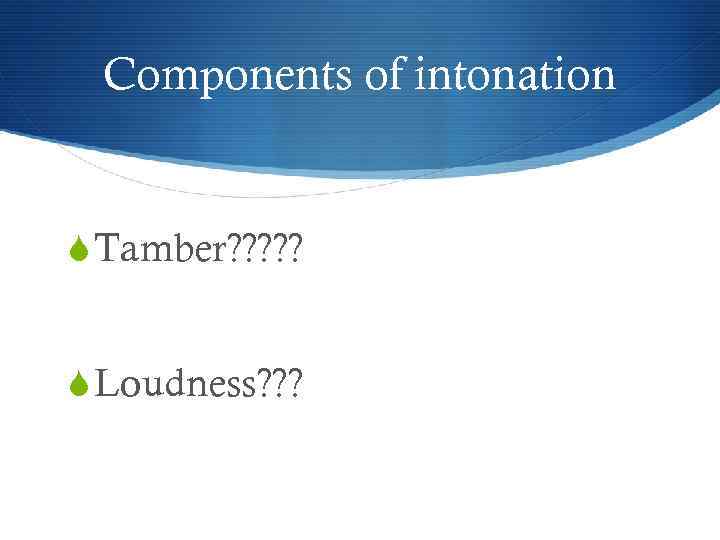
Components of intonation S Tamber? ? ? S Loudness? ? ?
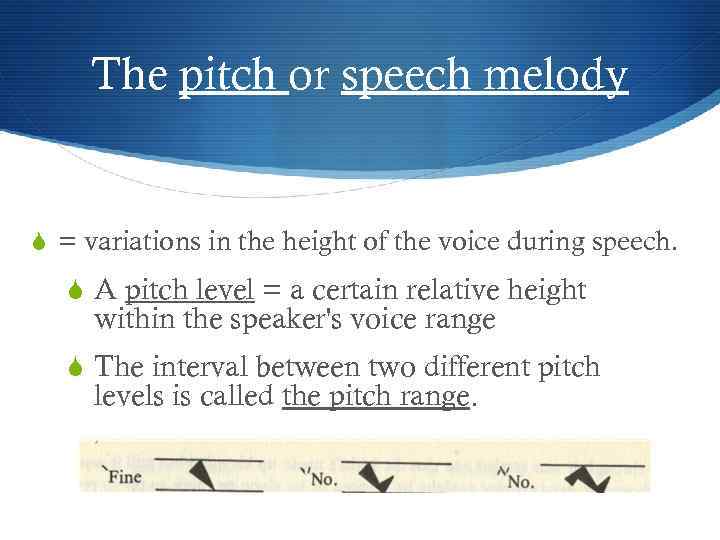
The pitch or speech melody S = variations in the height of the voice during speech. S A pitch level = a certain relative height within the speaker's voice range S The interval between two different pitch levels is called the pitch range.
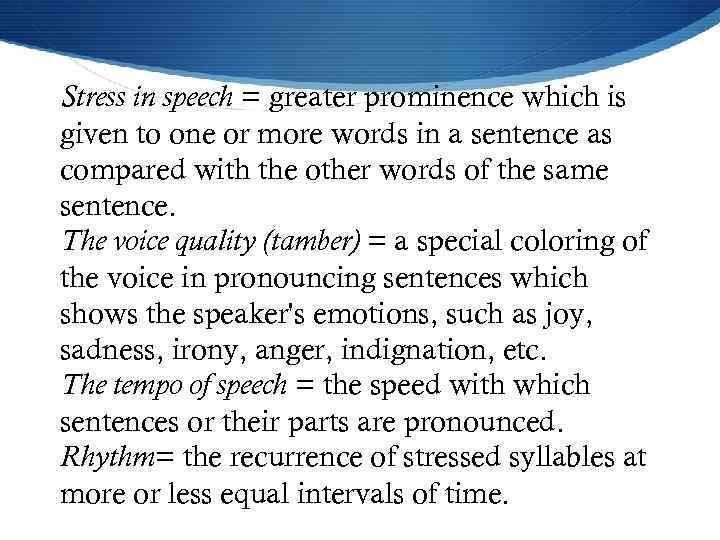
Stress in speech = greater prominence which is given to one or more words in a sentence as compared with the other words of the same sentence. The voice quality (tamber) = a special coloring of the voice in pronouncing sentences which shows the speaker's emotions, such as joy, sadness, irony, anger, indignation, etc. The tempo of speech = the speed with which sentences or their parts are pronounced. Rhythm= the recurrence of stressed syllables at more or less equal intervals of time.
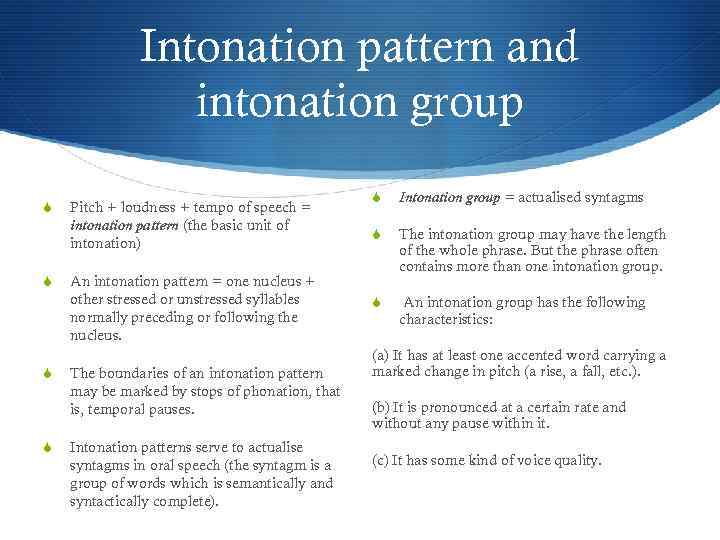
Intonation pattern and intonation group S S Pitch + loudness + tempo of speech = intonation pattern (the basic unit of intonation) An intonation pattern = one nucleus + other stressed or unstressed syllables normally preceding or following the nucleus. The boundaries of an intonation pattern may be marked by stops of phonation, that is, temporal pauses. Intonation patterns serve to actualise syntagms in oral speech (the syntagm is a group of words which is semantically and syntactically complete). S Intonation group = actualised syntagms S The intonation group may have the length of the whole phrase. But the phrase often contains more than one intonation group. S An intonation group has the following characteristics: (a) It has at least one accented word carrying a marked change in pitch (a rise, a fall, etc. ). (b) It is pronounced at a certain rate and without any pause within it. (c) It has some kind of voice quality.
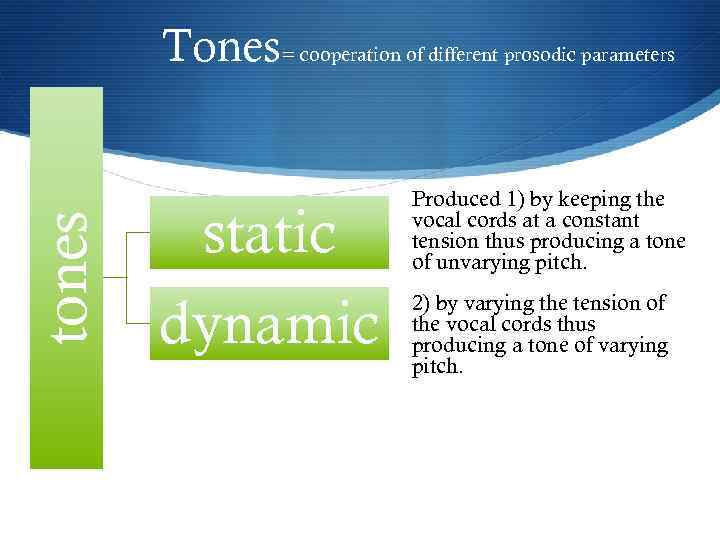
tones Tones= cooperation of different prosodic parameters static dynamic Produced 1) by keeping the vocal cords at a constant tension thus producing a tone of unvarying pitch. 2) by varying the tension of the vocal cords thus producing a tone of varying pitch.
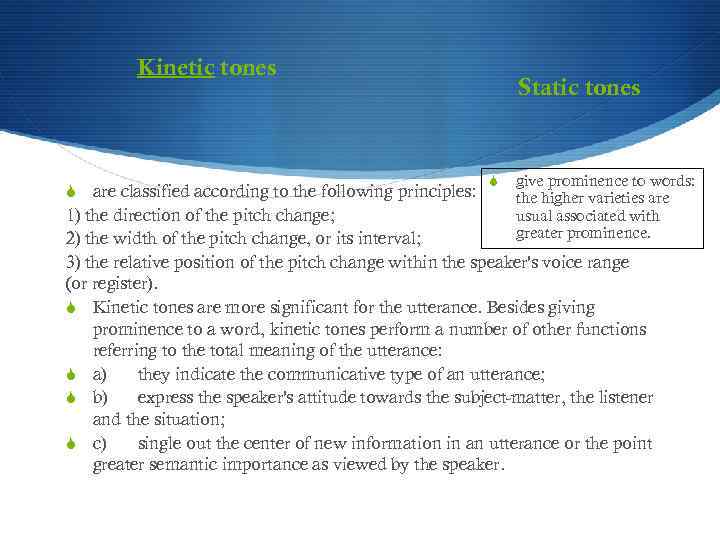
Kinetic tones S are classified according to the following principles: Static tones S give prominence to words: the higher varieties are usual associated with greater prominence. 1) the direction of the pitch change; 2) the width of the pitch change, or its interval; 3) the relative position of the pitch change within the speaker's voice range (or register). S Kinetic tones are more significant for the utterance. Besides giving prominence to a word, kinetic tones perform a number of other functions referring to the total meaning of the utterance: S a) they indicate the communicative type of an utterance; S b) express the speaker's attitude towards the subject-matter, the listener and the situation; S c) single out the center of new information in an utterance or the point greater semantic importance as viewed by the speaker.
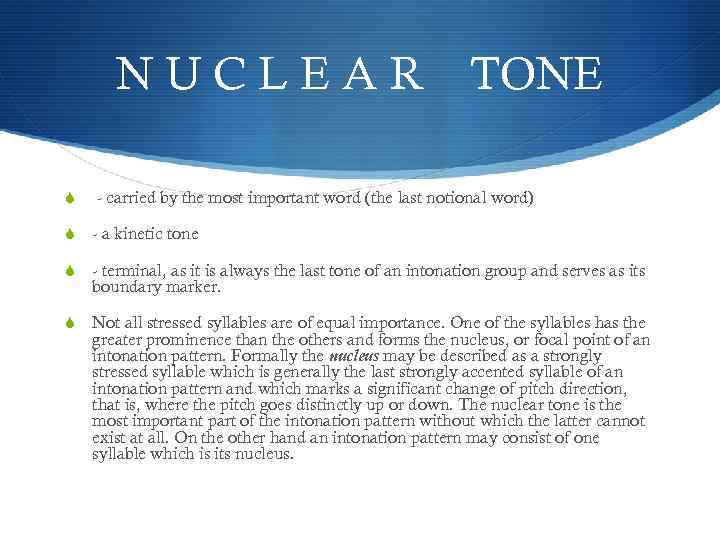
NUCLEAR TONE S - carried by the most important word (the last notional word) S - a kinetic tone S - terminal, as it is always the last tone of an intonation group and serves as its boundary marker. S Not all stressed syllables are of equal importance. One of the syllables has the greater prominence than the others and forms the nucleus, or focal point of an intonation pattern. Formally the nucleus may be described as a strongly stressed syllable which is generally the last strongly accented syllable of an intonation pattern and which marks a significant change of pitch direction, that is, where the pitch goes distinctly up or down. The nuclear tone is the most important part of the intonation pattern without which the latter cannot exist at all. On the other hand an intonation pattern may consist of one syllable which is its nucleus.
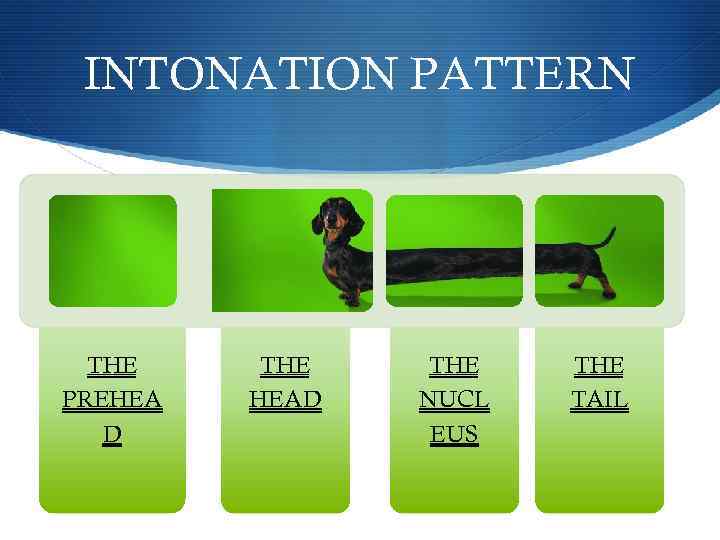
INTONATION PATTERN THE PREHEA D THE HEAD THE NUCL EUS THE TAIL
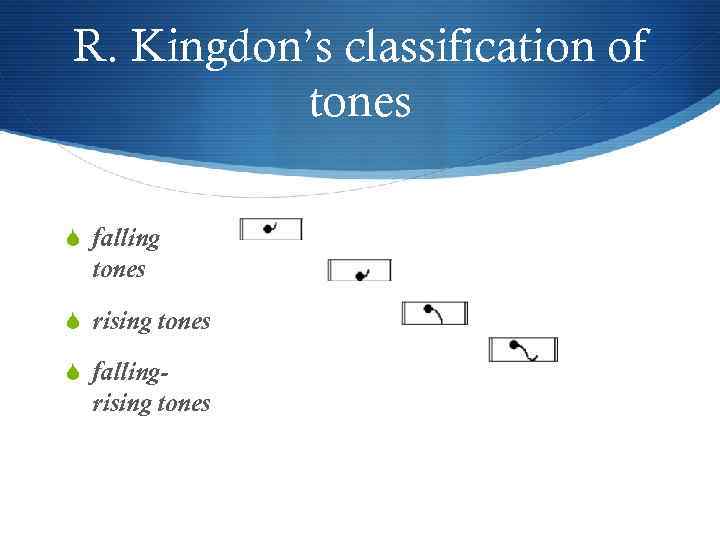
R. Kingdon’s classification of tones S falling tones S rising tones S falling- rising tones
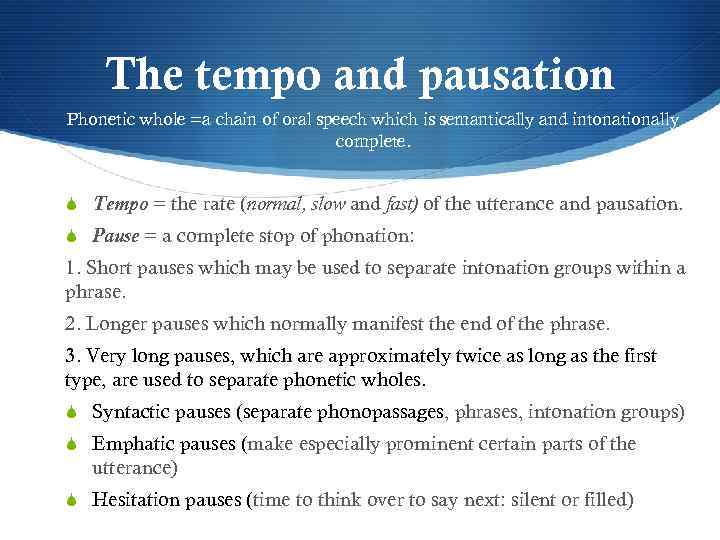
The tempo and pausation Phonetic whole =a chain of oral speech which is semantically and intonationally complete. S Tempo = the rate (normal, slow and fast) of the utterance and pausation. S Pause = a complete stop of phonation: 1. Short pauses which may be used to separate intonation groups within a phrase. 2. Longer pauses which normally manifest the end of the phrase. 3. Very long pauses, which are approximately twice as long as the first type, are used to separate phonetic wholes. S Syntactic pauses (separate phonopassages, phrases, intonation groups) S Emphatic pauses (make especially prominent certain parts of the utterance) S Hesitation pauses (time to think over to say next: silent or filled)